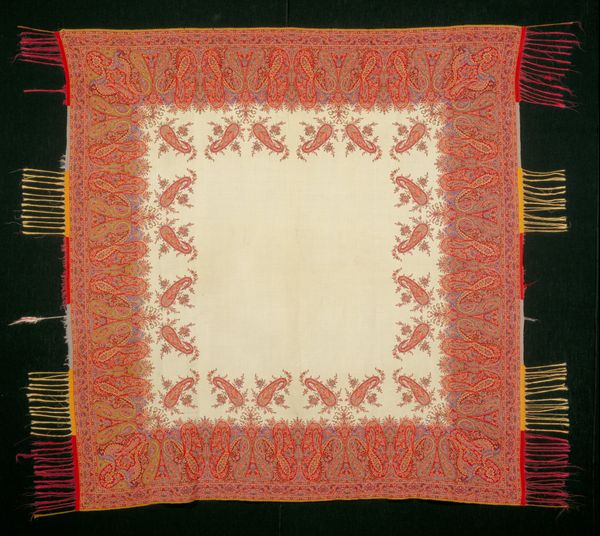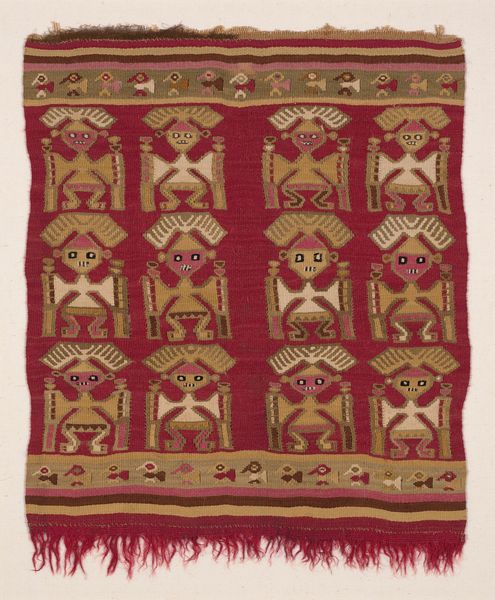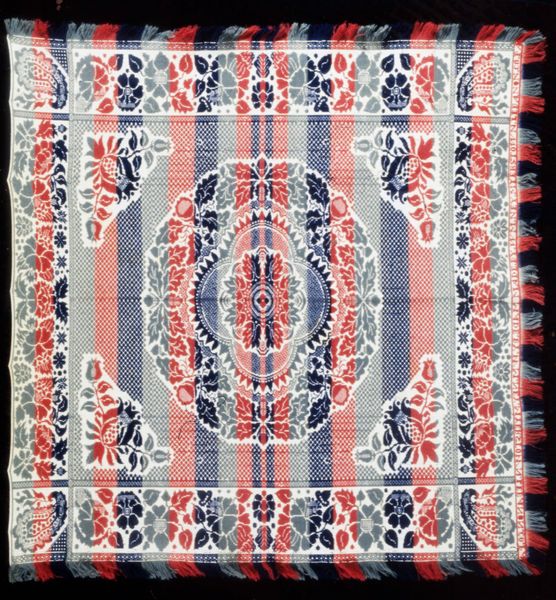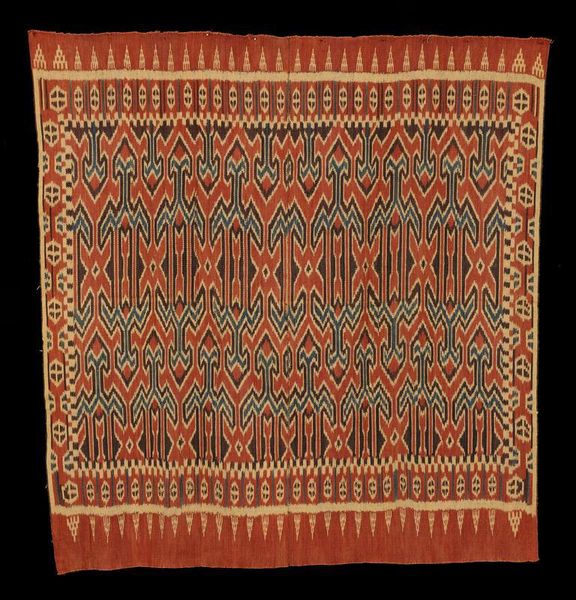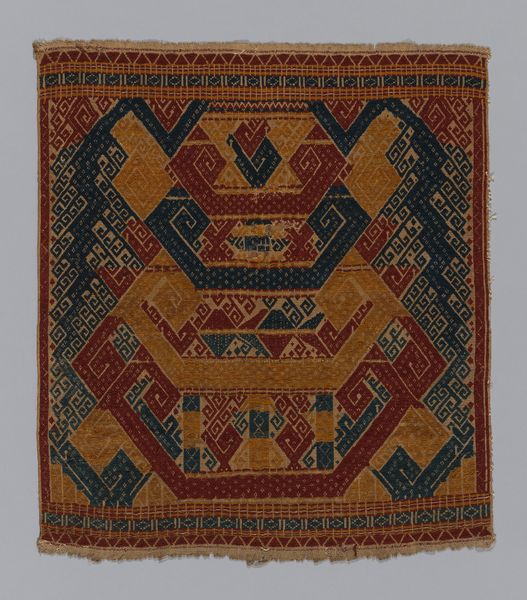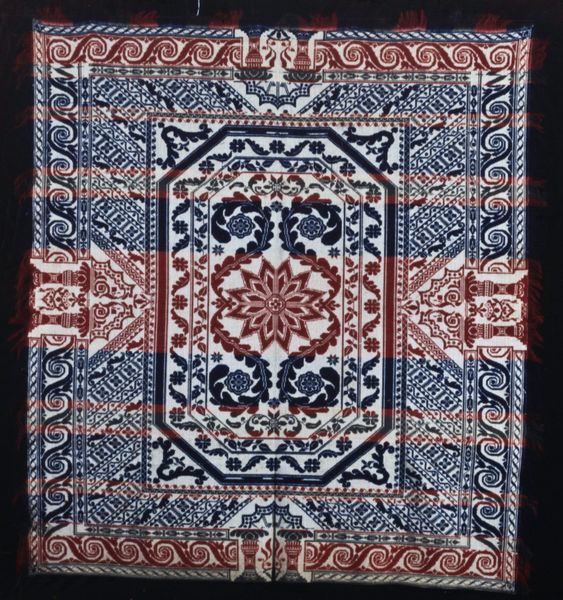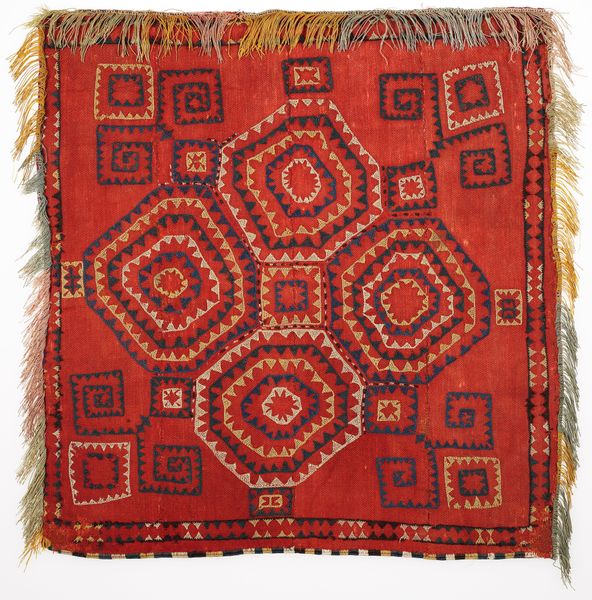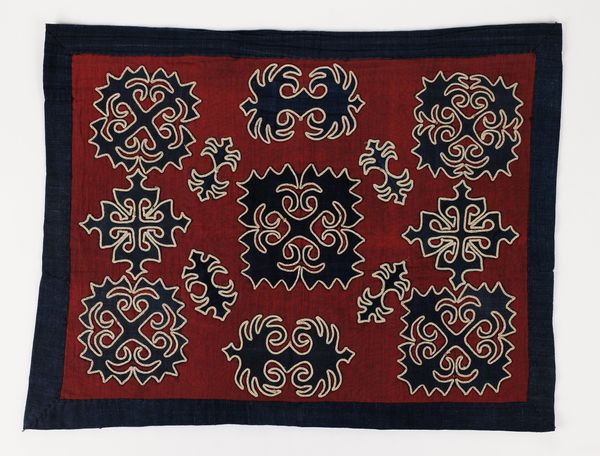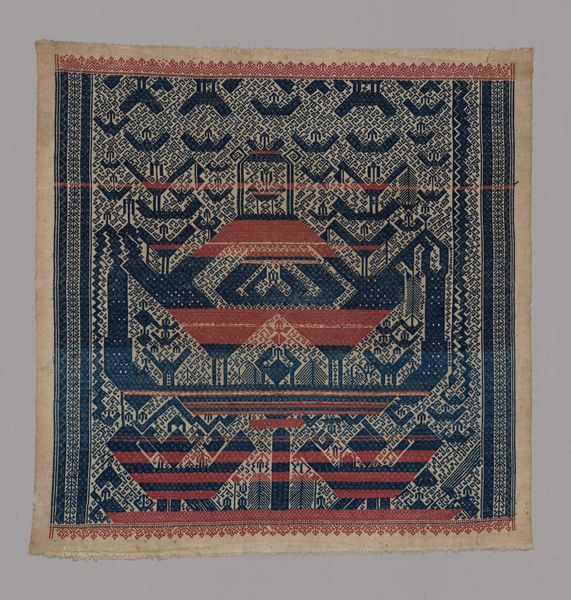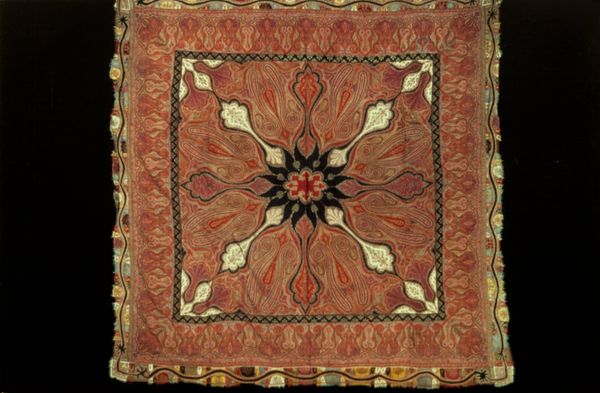
drawing, coloured-pencil, paper
#
drawing
#
coloured-pencil
#
paper
Dimensions: overall: 40.5 x 43.7 cm (15 15/16 x 17 3/16 in.)
Copyright: National Gallery of Art: CC0 1.0
Editor: We're looking at Arthur Merkley's "Table Napkin" from around 1940. It appears to be a drawing, maybe a study for a textile. It's predominantly red with an intricate design, giving off a really warm, homey feeling. How do you interpret this work, considering its context? Curator: It's interesting how you perceive that warmth. Considering the era, around 1940, this piece speaks volumes about the cultural significance placed on domestic artistry, wouldn't you agree? Napkins, especially those adorned with folk art-inspired patterns, transcend mere utility. What kind of social status is projected through its medium of display? Editor: Well, it feels pretty democratic because textiles and folk art were used in ordinary homes; would that suggest middle-class aspirations towards elevated decor? Curator: Exactly. The 'Pattern and Decoration' movement finds its roots here in the desire to bring art into everyday life, dismantling high-art barriers. Its purpose becomes far more than decoration alone. Do you see this extending beyond the purely visual, perhaps into identity or perhaps self-expression? Editor: Definitely, handmade items reflect values. This is starting to make me rethink my first reaction because folk art isn't naturally "homey." It's carefully manufactured to express an aesthetic or symbolic world. Curator: Indeed! Understanding its intended public function allows for seeing its full role in society beyond pure aesthetics. Considering that, does it challenge your initial assumptions on ‘homey’ feelings now that the art implies something constructed instead of intuitive? Editor: Totally. I learned that even seemingly simple pieces carry historical weight and can teach us a lot about social and cultural values! Curator: I agree. This piece urges us to reconsider the profound, frequently ignored links between artistry, culture, and the politics ingrained within daily routines.
Comments
No comments
Be the first to comment and join the conversation on the ultimate creative platform.
